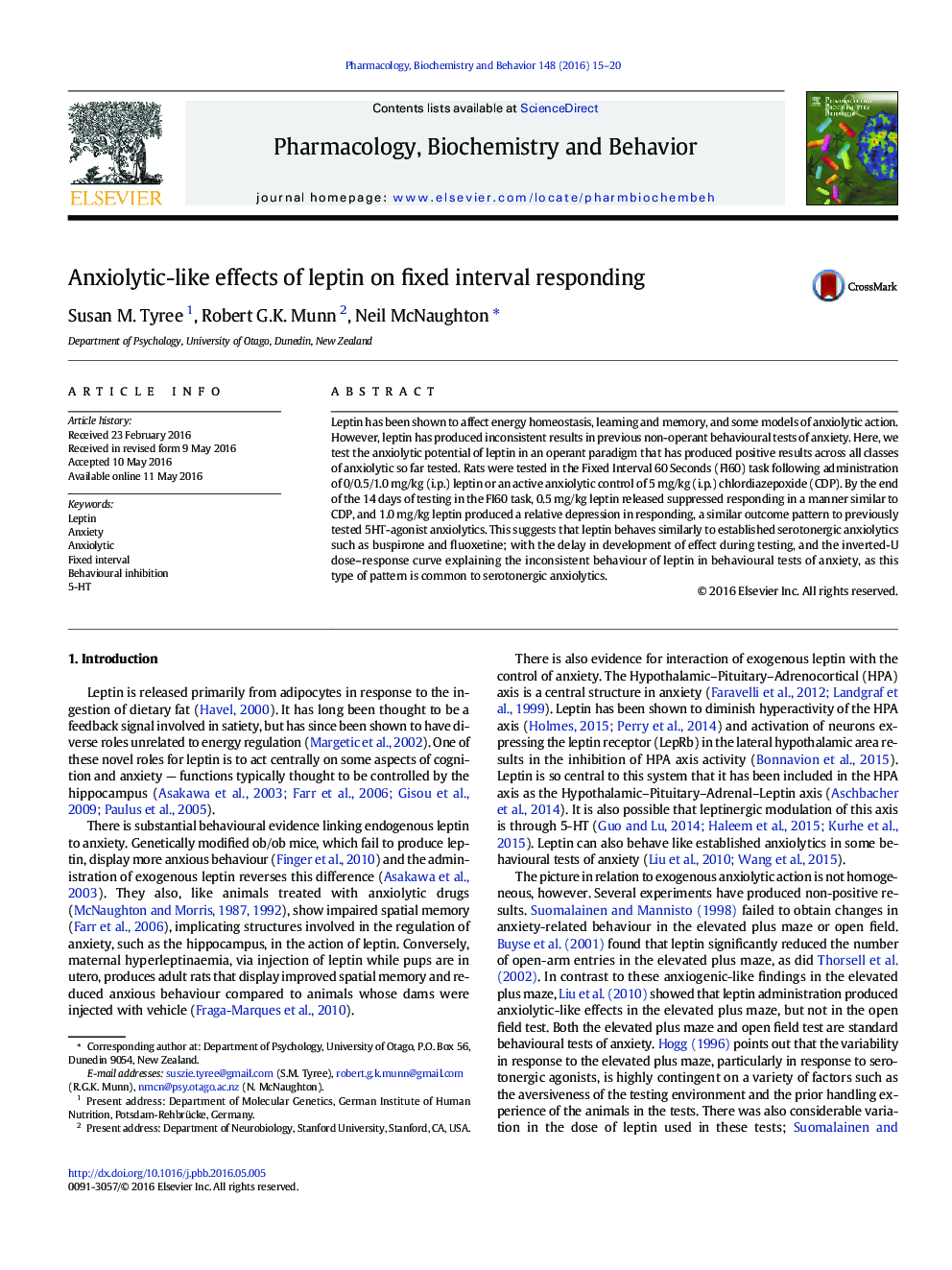| Article ID | Journal | Published Year | Pages | File Type |
|---|---|---|---|---|
| 2012645 | Pharmacology Biochemistry and Behavior | 2016 | 6 Pages |
•Leptin has effects like serotonergic anxiolytics in a fixed interval schedule.•0.5 mg/kg, i.p. leptin releases inhibition like a benzodiazepine or serotonergic.•1.0 mg/kg, i.p. leptin suppresses responding like high dose serotonergics.•The leptin dose–response curve explains reports of inconsistent anxiolytic action.
Leptin has been shown to affect energy homeostasis, learning and memory, and some models of anxiolytic action. However, leptin has produced inconsistent results in previous non-operant behavioural tests of anxiety. Here, we test the anxiolytic potential of leptin in an operant paradigm that has produced positive results across all classes of anxiolytic so far tested. Rats were tested in the Fixed Interval 60 Seconds (FI60) task following administration of 0/0.5/1.0 mg/kg (i.p.) leptin or an active anxiolytic control of 5 mg/kg (i.p.) chlordiazepoxide (CDP). By the end of the 14 days of testing in the FI60 task, 0.5 mg/kg leptin released suppressed responding in a manner similar to CDP, and 1.0 mg/kg leptin produced a relative depression in responding, a similar outcome pattern to previously tested 5HT-agonist anxiolytics. This suggests that leptin behaves similarly to established serotonergic anxiolytics such as buspirone and fluoxetine; with the delay in development of effect during testing, and the inverted-U dose–response curve explaining the inconsistent behaviour of leptin in behavioural tests of anxiety, as this type of pattern is common to serotonergic anxiolytics.
